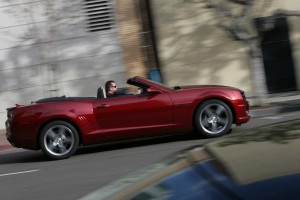With summer officially just a day away, motorists by the millions are rolling back the tops on their convertibles – or at least hanging an arm out the window. And that could be putting them at severe risk of cancer, new research warns.
While it may be difficult to confirm a definitive link, researchers at the University of Washington in Seattle have found that Americans have a tendency to develop the worst forms of skin cancer – notably melanomas and merkel cell carcinomas – on the left side of their bodies. That’s especially true when it comes to cancers discovered on the upper arm, according to a study published in The Journal of the American Academy of Dermatology.
The new report adds to the growing body of evidence that driving can increase a motorist’s UV exposure which, in turn, is linked to the formation of skin cancers. In countries like the U.S., where drivers sit on the left side of the vehicle, various studies have found more cancers form on the left side. Other research, including a 1986 report from Australia, found that in countries where the steering wheel is situated on the other side of the vehicle there are more cancers and pre-cancerous growths on the right side of a driver’s body.
The problem is particularly severe, suggested the authors of the new U of W study, for those who drive with a window open or those who spend an extensive amount of time behind the wheel.
The good news, added co-author Paul Nghiem, is that, “Any of the glass in the car will get out most of the bad UV.”
However, automotive experts note that side windows typically do not incorporate the same protective layers of plastic normally found in the windshield which tend to do a better job at blocking UV radiation.
But even then, those who spend extensive period behind the wheel should be aware of the risk. “Truckers would certainly be a group who would want to be aware of UV exposure while driving,” said co-author Kelly Paulson.
For professional drivers and for those who either drive with the window or a convertible top down, the study says the use of sunscreen is “prudent.”
Meanwhile, experts advise that the public at general – and high-risk motorists, in particular – become aware of the ABCDEs of skin cancer prevention:
- A for Asymmetry. Moles that are inconsistent in shape are an immediate warning sign, as both sides should be the same shape;
- B for Borders. Look for borders that are irregular, uneven or blurry;
- C for Colors. Normal moles are usually all one color. One that has shades of pink, brown, and black needs to be checked;
- D for Diameter. If the mole is bigger than a pencil eraser, it’s time to get it checked; and
- E for Evolving. A patch of skin, a mole or a hard-to-heal scab that is changing in size, shape or color could be a sign of trouble.

